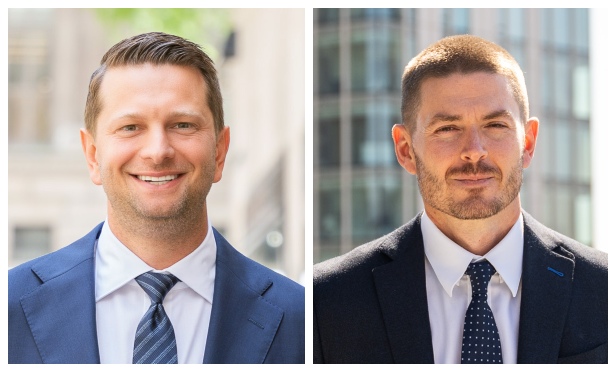The EXPO line has already met its 2020 ridership goals, according to a new report from JLL. The EXPO line opened in late 2016, connecting Downtown to Santa Monica. Last year, there was a 49% increase in ridership, enough to bring the line to 2020 projections. Despite the popularity of the EXPO line, other metro lines are seeing a decrease in ridership. Green, Blue and Red lines have all seen a decrease in ridership. To find out more about these trends in ridership and how it has impacted commercial real estate, we sat down with Amber Schiada, JLL SVP and national director of JLL research in the Southwest.
GlobeSt.com: Why do you think the Expo Line has been so popular?
Amber Schiada: What could be better than a smooth ride to the beach? It's probably the easiest way to get to Santa Monica without suffering through traffic. And it's one of the hottest office submarkets in Los Angeles and the West Coast. The explosive growth in new media and technology companies there means a lot more people are working in offices. While the car is still king, more people are seeing the benefits of public transit, boosting ridership numbers.
GlobeSt.com: Why is ridership declining on other metro lines?
Schiada: It's difficult to say with certainty. For example, if you look at the Red Line, ridership was down nearly five percent last year, but it increased the year before. The Red Line has the highest volume of riders with nearly 142,000 on an average weekday, compared to just less than 60,000 on the Expo Line. With a growing tenant base, and the number of new residential developments under way in Hollywood, I wouldn't be surprised to see ridership on the Red Line increase again in 2018. Similarly, ridership was down on the Green Line, but average daily ridership is lowest there at just 32,000. Construction on the LAX connector is underway, disrupting service on that line through April, so that could impact the numbers again this year.
GlobeSt.com: What do these trends say about public transit trends in L.A.?
Schiada: People are still getting used to the idea of taking public transit in Los Angeleds. While it's possible to live car-free in LA, it's not something many people do. I moved here from San Francisco less than a year ago where taking public transit was essential to getting around there, so it's been eye opening to see how locals view public transit here. In Los Angeles, rail lines align with highly-traveled existing corridors, and with our major office markets, but rail doesn't reach everything, and doesn't reach very deep into the denser residential corridors. When it comes to commuting, rail is an easier option if it happens to take you to your office without too many extra steps, like taking a bus, or walking more than 15 minutes (or even more than 10 minutes—I am not in San Francisco anymore!). But it's not always that easy. It's going to take a long time before it's second nature here, like it is in San Francisco or NYC.
GlobeSt.com: How has the increased ridership on the Expo Line impacted surrounding commercial real estate?
Schiada: Tenants looking to move or grow into the market are asking about transit more than they ever have before. Not all tenants see transit access as a top priority, but it's a topic that comes up in every discussion, along with housing. Culver City has seen a lot tenants and investor interest since the line opened up, with several projects underway, and exciting new tenants planting their flags in that market in recent months. The rail line, new housing developments and the sense of place that's being developed in Culver City is very appealing to tenants especially because of its proximity to Santa Monica and Playa Vista and those two tech clusters. The rail line is not the sole reason for this submarket's resurgence, but it certainly plays an important part.
GlobeSt.com: What is your outlook for the Expo Line? What about other metro lines in L.A.?
Schiada: Los Angeles is undergoing one of the largest public transit improvement projects in the country, maybe the world, which will transform the city for the next few generations. We're expected to grow by another one million people by 2035, and getting around on the streets won't get any easier. The development of transit is essential to the long-term sustainability of our city. Transit use will go up as these developments are completed and ease of use improves. The mindset of the city is changing, as it must if we want to compete on the global stage. Ridership on all lines will increase over the long term, including the Expo Line. The extension of the Purple Line and the development of the LAX connector will boost overall ridership. With the LA2028 Olympics on the distant horizon, the implementation of our new transit system will also give the world the opportunity to see that Los Angeles is a dynamic world-class city that can grow for the next several generations.
Want to continue reading?
Become a Free ALM Digital Reader.
Once you are an ALM Digital Member, you’ll receive:
- Breaking commercial real estate news and analysis, on-site and via our newsletters and custom alerts
- Educational webcasts, white papers, and ebooks from industry thought leaders
- Critical coverage of the property casualty insurance and financial advisory markets on our other ALM sites, PropertyCasualty360 and ThinkAdvisor
Already have an account? Sign In Now
*May exclude premium content© 2024 ALM Global, LLC, All Rights Reserved. Request academic re-use from www.copyright.com. All other uses, submit a request to [email protected]. For more information visit Asset & Logo Licensing.









